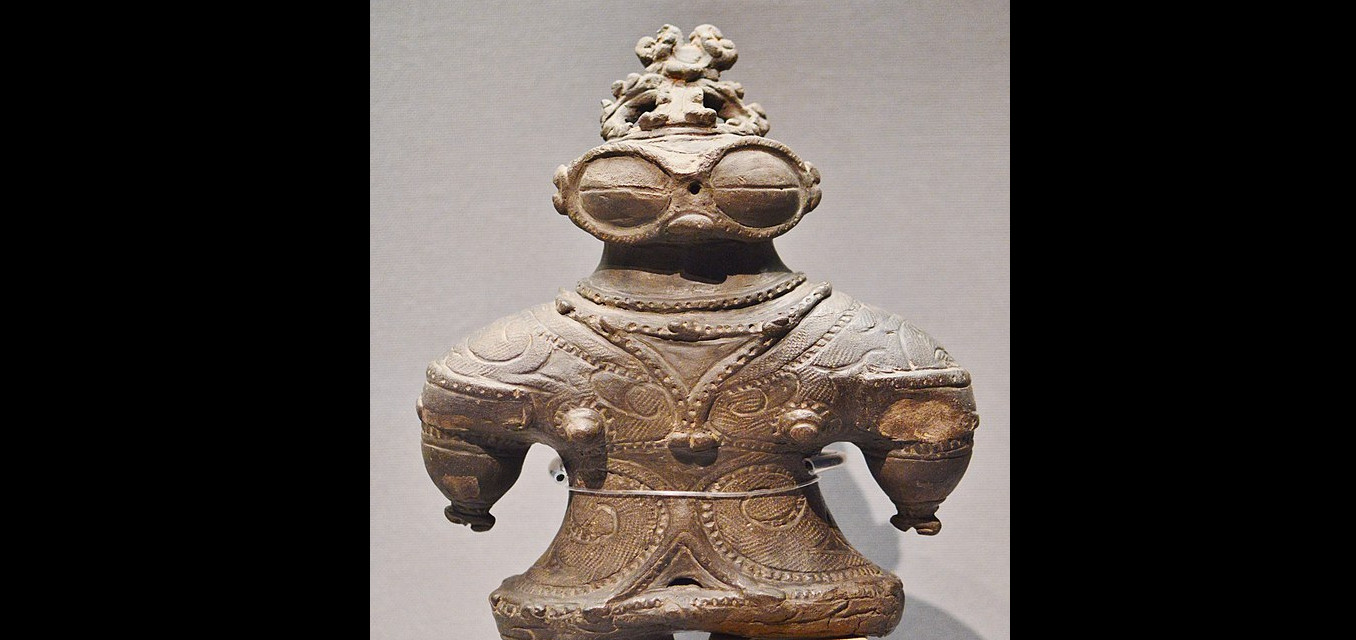The Jomon people were indigenous inhabitants of Japan, known for their distinctive pottery, from which the Jomon period (approximately 14,000 BC to around 300 BC) gets its name. The term “Jomon” means “cord-marked” and refers to the pattern of marks found on the surface of their pottery, which was made by pressing cords into the wet clay.
The Jomon culture is one of the oldest known cultures in the world that made pottery, predating other pottery-making cultures by several millennia. This period is characterized by a lifestyle with some evidence of early agriculture and domestication of plants and animals, although hunting, fishing, and foraging remained the primary means of subsistence.
The Jomon people lived in various types of dwellings, including pit houses, and their communities were typically small. They are also known for their elaborate clay figurines, called dogu, many of which appear to have ceremonial or religious significance.
Sedentary lifestyle
The craft of pottery and figurine making inherently necessitates a degree of sedentary lifestyle. This is primarily because the production process is time-consuming and requires stable, established facilities. From the initial stages of clay extraction and preparation to shaping, decorating, and firing in kilns, pottery demands not just time but also a considerable investment in infrastructure, such as kilns and storage spaces for both raw materials and finished products. Furthermore, the delicate nature of clay objects before and after firing makes their transport over long distances risky, encouraging the artisans to remain in proximity to their production sites. The evolution of pottery in human history is closely linked with the transition from nomadic to sedentary societies, where the development of agriculture provided the food surplus and stability necessary for communities to settle in one place, engage in specialized crafts, and produce pottery for various uses, including cooking, storage, and ceremonial purposes. This shift not only facilitated the growth of complex societies but also reflected a fundamental change in human interaction with the environment, marking a move towards controlling and shaping resources to suit settled life.
Appearance
The appearance of the Jomon people, as inferred from archaeological findings such as skeletal remains and figurines, likely varied across the different phases of the Jomon period due to the long span of time it covers. Generally, they are thought to have been of East Asian descent, with physical characteristics typical of indigenous populations of the region. This would include dark hair, possibly varying in texture and length, and a broad range of skin tones depending on the geographic area and period. The Jomon people’s physical build was robust, suited to their lifestyle, which demanded physical endurance and strength. Artefacts such as clay figurines, often referred to as dogu, provide insight into their clothing and ornamentation, suggesting that they wore a variety of garments made from bark, fur, and possibly woven plant fibres, adorned with jewellery or amulets made from stone, bone, and shell. These artefacts also hint at complex hairstyles and possibly body or facial tattoos or paint, indicating a rich cultural expression through personal appearance.
Beliefs
The beliefs of the Jomon people, though not recorded in written form, can be inferred from archaeological findings such as figurines, burial practices, and other ritual artefacts. These suggest a deep spiritual connection with nature, possibly encompassing animism, the belief that natural objects and phenomena possess a spiritual essence. The intricate designs on their pottery, as well as the enigmatic dogu figurines, often interpreted as goddesses or protective spirits, indicate that they practised rituals and held beliefs related to fertility, health, and protection. The careful arrangement of burials, sometimes with goods or offerings, implies a belief in an afterlife or the importance of providing for the deceased in their journey beyond. Moreover, the variety and distribution of ritualistic sites and objects across different regions suggest that there may have been a diverse range of local beliefs and practices within the broader Jomon culture. This diversity points to a complex spiritual life, with reverence for the forces of nature, ancestors, and possibly a pantheon of deities or spirits associated with the natural world and human experiences.
The end of the Jomon period marked the beginning of the Yayoi period, which saw the introduction of wet-rice agriculture, metal tools, and significant cultural changes, likely due to the influx of people from the Asian continent. The transition from the Jomon to the Yayoi period represents a significant shift in the prehistory of Japan, leading to the development of the classical Japanese culture.
